Resources

A pioneer in queer theory and literary studies, Eve Kosofsky Sedgwick brings together for the first time in Touching Feeling her most powerful explorations of emotion and expression. In essays that show how her groundbreaking work in queer theory has developed into a deep interest in affect, Sedgwick offers what she calls "tools and techniques for nondualistic thought," in the process touching and transforming such theoretical discourses as psychoanalysis, speech-act theory, Western Buddhism, and the Foucauldian "hermeneutics of suspicion." In prose sometimes somber, often high-spirited, and always accessible and moving, Touching Feeling interrogates-through virtuoso readings of works by Henry James, J. L. Austin, Judith Butler, the psychologist Silvan Tomkins and others-emotion in many forms. What links the work of teaching to the experience of illness? How can shame become an engine for queer politics, performance, and pleasure? Is sexuality more like an affect or a drive? Is paranoia the only realistic epistemology for modern intellectuals? Ultimately, Sedgwick's unfashionable commitment to the truth of happiness propels a book as open-hearted as it is intellectually daring. (From the Publisher)
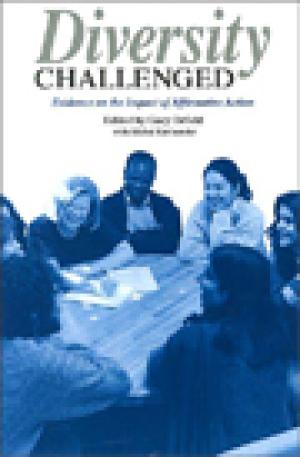
In the courts and in referenda campaigns, affirmative action in college admissions is under full-scale attack. Though it was designed to help resolve a variety of serious racial problems, affirmative action's survival may turn on just one question--whether or not the educational value of diversity is sufficiently compelling to justify consideration of race as a factor in deciding whom to admit to colleges and universities. Diversity Challenged is designed to address that question. This book explores what is known about how increasing minority enrollment changes and enriches the educational process. In chapter after chapter, researchers and policymakers discuss substantial developing evidence showing that diversity of students can and usually does produce a broader educational experience, both in traditional learning and in preparing for jobs, professions, and effective citizenship in a multiracial democracy. The evidence also suggests that such benefits can be significantly increased by appropriate leadership and support on campus. Diversity may be challenged on college campuses today, but the research and evidence in this book shows how diversity works. (From the Publisher)
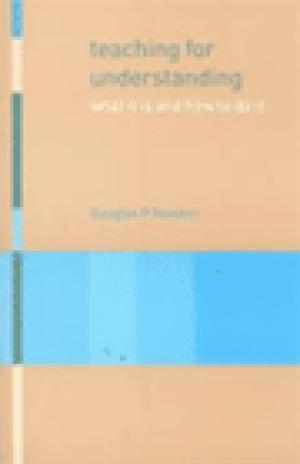
Teaching for Understanding describes the nature of understanding, strategies that support it, and factors which bear upon it in a way which makes it accessible to teachers in raining, practicing teachers, and lecturer in education. Its coverage includes understanding and its nature, constructing relationships and mental structures, surrogate teachers, metacognition, and assessment. (From the Publisher)

A smart, compassionate look at the important and often bewildering questions young adults face in their search for purpose, meaning and faith, and a clarion call to concerned adults to actively mentor the next generation. (From the Publisher)
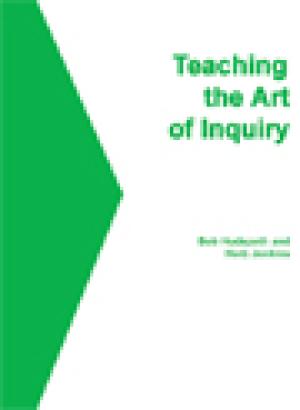
In this guide, Bob Hudspith and Herb Jenkins describe an approach to teaching that has been used successfully for many years at McMaster University, and which will be of wide interest to university teachers who wish to encourage critical thinking and self-directed research into their courses. The guide thoroughly documents the philosophy and rationale of inquiry-based learning, describes how the approach works in practice, and offers advice and numerous examples on adapting the technique for a wide range of situations and disciplines.
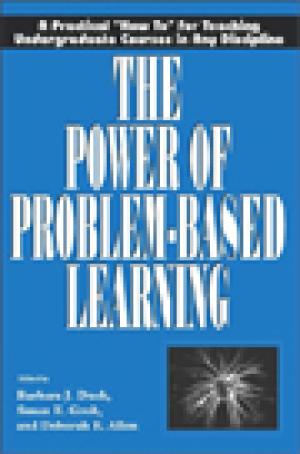
Problem-based learning is a powerful classroom process, which uses real world problems to motivate students to identify and apply research concepts and information, work collaboratively and communicate effectively. It is a strategy that promotes life-long habits of learning. The University of Delaware is recognized internationally as a center of excellence in the use and development of PBL. This book presents the cumulative knowledge and practical experience acquired over nearly a decade of integrating PBL in courses in a wide range of disciplines. This "how to" book for college and university faculty. It focuses on the practical questions which anyone wishing to embark on PBL will want to know: "Where do I start?" – "How do you find problems?" – "What do I need to know about managing groups?" – "How do you grade in a PBL course?" The book opens by outlining how the PBL program was developed at the University of Delaware -- covering such issues as faculty mentoring and institutional support -- to offer a model for implementation for other institutions. The authors then address the practical questions involved in course transformation and planning for effective problem-based instruction, including writing problems, using the Internet, strategies for using groups, the use of peer tutors and assessment. They conclude with case studies from a variety of disciplines, including biochemistry, pre-law, physics, nursing, chemistry, political science and teacher education. This introduction for faculty, department chairs and faculty developers will assist them to successfully harness this powerful process to improve learning outcomes. (From the Publisher)
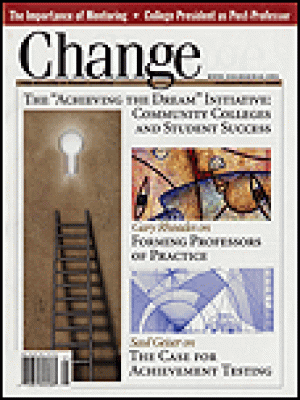
Journal Issue.
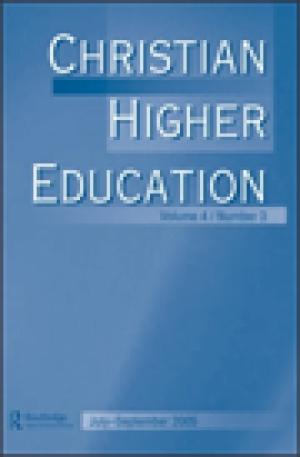
Journal Issue
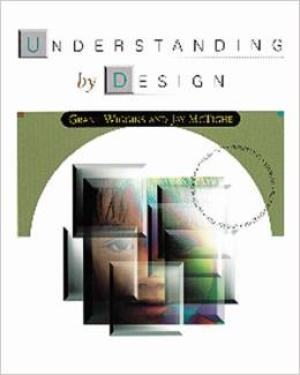
What is understanding and how does it differ from knowledge? How can we determine the big ideas worth understanding? Why is understanding an important teaching goal, and how do we know when students have attained it? How can we create a rigorous and engaging curriculum that focuses on understanding and leads to improved student performance in today's high-stakes, standards-based environment? Authors Grant Wiggins and Jay McTighe answer these and many other questions in this second edition of Understanding by Design. Drawing on feedback from thousands of educators around the world who have used the UbD framework since its introduction in 1998, the authors have revised and expanded their original work to guide educators across the K16 spectrum in the design of curriculum, assessment, and instruction. With an improved UbD Template at its core, the book explains the rationale of backward design and explores in greater depth the meaning of such key ideas as essential questions and transfer tasks. Readers will learn why the familiar coverage- and activity-based approaches to curriculum design fall short, and how a focus on the six facets of understanding can enrich student learning. With an expanded array of practical strategies, tools, and examples from all subject areas, the book demonstrates how the research-based principles of Understanding by Design apply to district frameworks as well as to individual units of curriculum. Combining provocative ideas, thoughtful analysis, and tested approaches, Understanding by Design, Expanded 2nd Edition, offers teacher-designers a clear path to the creation of curriculum that ensures better learning and a more stimulating experience for students and teachers alike. (From the Publisher)
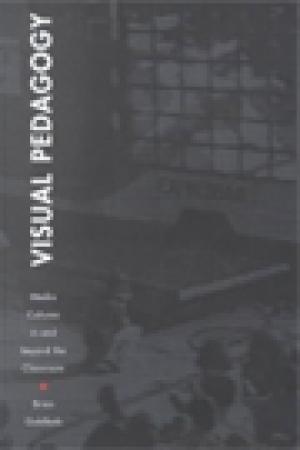
In classrooms, museums, public health clinics and beyond, the educational uses of visual media have proliferated over the past fifty years. Film, video, television, and digital media have been integral to the development of new pedagogical theories and practices, globalization processes, and identity and community formation. Yet, Brian Goldfarb argues, the educational roles of visual technologies have not been fully understood or appreciated. He contends that in order to understand the intersections of new media and learning, we need to recognize the sweeping scope of the technologically infused visual pedagogy both in and outside the classroom. From Samoa to the United States mainland to Africa and Brazil, from museums to city streets, Visual Pedagogy explores the educational applications of visual media in different institutional settings during the past half century. Looking beyond the popular media texts and mainstream classroom technologies that are the objects of most analyses of media and education, Goldfarb encourages readers to see a range of media subcultures as pedagogical tools. He illuminates the educational uses of visual technologies in schools and other venues. The projects he analyzes include media produced by AIDS/HIV advocacy groups and social services agencies for classroom use in the 90s; documentary and fictional cinemas of West Africa used by the French government and then by those resisting it; museum exhibitions; and TV Anhembi, a municipally sponsored collaboration between the television industry and community-based videographers in Sao Paolo, Brazil. Combining media studies, pedagogical theory, and art history, and including an appendix of visual media resources and ideas about the most productive ways to utilize visual technologies for educational purposes, Visual Pedagogy will be useful to educators, administrators, and activists. (From the Publisher)